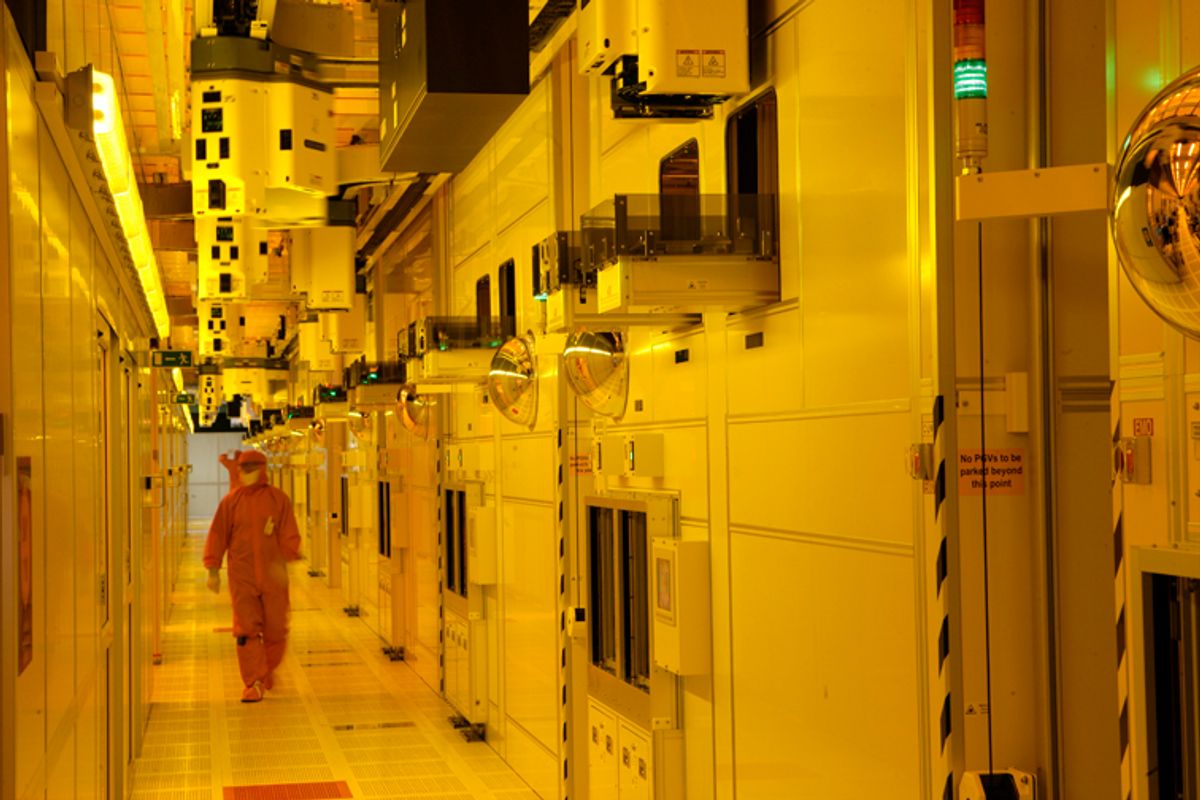But even here the economic side of the equation can’t be ignored: after all, the best transistors won’t do the world any good if they’re too expensive to make. On Tuesday at IEDM, GlobalFoundries CEO Ajit Manocha drove home some of the issues that make the future of the chip industry more than a little murky.
By Manocha’s count, TSMC, GlobalFoundries, Intel, and Samsung are the only companies left pursuing the manufacturing technology needed to make the most advanced chips. Two of those companies (TSMC and GlobalFoundries) are foundries, which offer their chipmaking services to other firms. Manocha categorizes the other two, Intel and Samsung, as integrated device manufacturers (IDM’s), manufacturing their own designs, although Samsung, and to a lesser extent, Intel, also make chips for others.
This chipmaking complement is notable because it’s quite small. Once upon a time (about 12 years ago), Manocha said, there were a good 20 companies making advanced chips. Now “the list has shrunk…to four.”
This consolidation is driven primarily by cost. R&D is getting more and more expensive. And the cost of building a new fabrication plant is getting exceedingly steep: GlobalFoundries, for example, expects to spend about US $6.9 billion on the company’s new fab in upstate New York.
There are more challenges to come. Last week, outgoing Intel CEO Paul Otellini noted two significant hurdles coming up. One is the transition to 450-mm wafers from 300-mm wafers, a move that could drive the cost of new chip fabs to an even more staggering $10 billion. Then there is the transition to extreme ultraviolet lithography, which may one day save a lot of steps in patterning chips but will also add to the expense.
According to a transcript posted to the website Seeking Alpha, Otellini described those upcoming hurdles as a “chasm” that not every company may be able to cross. “I think you will likely see the structure of the industry evolve pretty dramatically over the next 4 to 5 years.”
The foundries, not unexpectedly, don’t look very healthy in Otellini’s crystal ball. Intel, which leads the field in R&D spending, has traditionally been the first with new transistor technologies like new gate stack materials and, more recently, 3-D transistors. In the past, Otellini said, other companies could follow suit by reverse engineering what Intel has done. Now, “you get to the dimensions that we are at today, and reverse engineering destroys the part in a way that you can't analyze it..it's becoming more difficult for everybody to, sort of, ride the coattails.”
To stay in an increasingly fast-moving game, Manocha envisions foundries will have to evolve into “virtual IDM’s” collaborating very early and very closely with customers and other companies that are part of the chipmaking ecosystem. As chip design and the underlying devices get more complex, it seems like that level of collaboration will be vital.
But will it be enough to keep the foundries competitive? Could their business model eventually displace vertically integrated ones like Intel's? These are old questions. But given the extreme consolidation of the field and the quickening pace of manufacturing process development, they’re taking on a new level of urgency.
(Image: Intel)
Rachel Courtland, an unabashed astronomy aficionado, is a former senior associate editor at Spectrum. She now works in the editorial department at Nature. At Spectrum, she wrote about a variety of engineering efforts, including the quest for energy-producing fusion at the National Ignition Facility and the hunt for dark matter using an ultraquiet radio receiver. In 2014, she received a Neal Award for her feature on shrinking transistors and how the semiconductor industry talks about the challenge.




